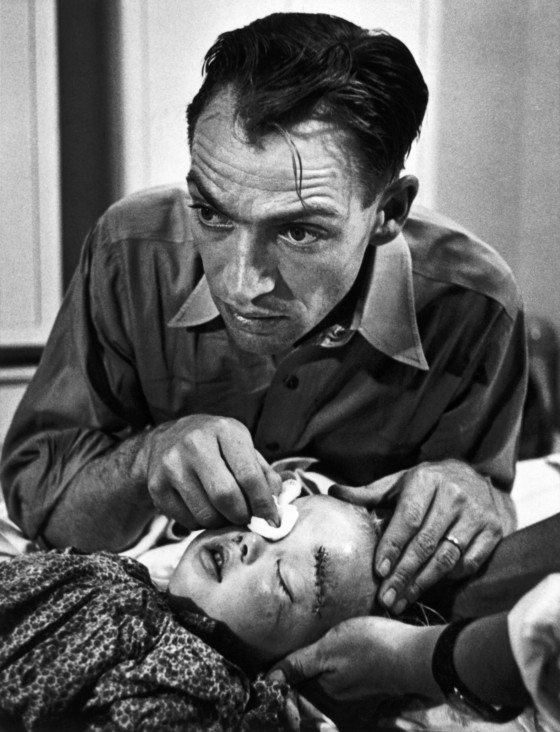Country Doctor
The life of a country doctor in Colorado's Rocky Mountains, a landmark photoessay by W. Eugene Smith
Although he was only a member of Magnum for four years between 1955 and 58, acclaimed photographer W. Eugene Smith had a lasting impact on both the agency and photojournalism in general. Smith compared his mode of working to that of a playwright; the powerful narrative structures of his photo essays set a new benchmark for the genre. His series, The Country Doctor, shot on assignment for Life Magazine in 1948, documents the everyday life of Dr Ernest Guy Ceriani, a GP tasked with providing 24-hour medical care to over 2,000 people in the small town of Kremmling, in the Rocky Mountains. The story was important at the time for drawing attention to the national shortage of country doctors and the impact of this on remote communities. Today the photoessay is widely regarded as representing a definitive moment in the history of photojournalism.
Central to Smith’s practice was what he described as fading “into the wallpaper.” Although he was on assignment for just four weeks, his ability to melt into the surroundings is evident. From close-up shots of Ceriani performing surgery to photographs of the exhausted doctor sleeping atop his own operating table, the photoessay provides an unusually personal insight into the intimacies of a doctor’s working life. Describing the experience of being Smith’s subject-matter, Ceriani himself observed: “He would always be present. He would always be in the shadows. I would make the introduction and then go about my business as if he were just a door knob.”
"He would always be present. He would always be in the shadows. I would make the introduction and then go about my business as if he were just a door knob"
- Dr Ernest Ceriani
A “physician, surgeon, obstetrician, pediatrician, psychiatrist, dentist, oculist and laboratory technician,” as Life described him, Ceriani trained Chicago’s Loyola School of Medicine, then decided against a career as a doctor in the city, He was recruited by the hospital in Kremmling to be the sole physician for the area. Through Smith’s images, we are guided through the rigors of the doctor’s exhausting schedule: treating the daily ills, big and small, of an entire community, from administering an injection of morphine in the back of a car to the haunting photographs of an amputation. But the series also highlights the rewards of Ceriani’s work, his dedication to the job earning him the respect of his patients.
Returning from assignment, Smith selected two hundred images to send to Life but was infuriated by the way the magazine chose to lay out the story. Like many of his other seminal photoessays, The Country Doctor works in series: the arrangement of images providing viewers with a carefully crafted snapshot of Ceriani’s existence. With the order of his photographs being as important as each individual frame, falling into disagreement with publications over their edits was a common occurrence for Smith. Ultimately, however, his work is so distinctive because it takes the format of the traditional photoessay while infusing the stories with a psychological depth and intricacy of narrative heretofore unprecedented in photojournalism.
After several prior resignations, Smith finally left Life in 1954, after a disagreement over the edit of his essay on Albert Schweitzer, to embark on what he believed was to be his most important work: a photographic homage to the city of Pittsburg. The following year, he joined Magnum on the assurance that he would be able to freely pursue his own personal projects. His Pittsburg work became almost an obsession: commissioned to spend just three weeks in the city, Smith remained for three years and produced tens of thousands of images. The assignment bankrupted Smith; Magnum, too, felt the financial effects of supporting such a mammoth endeavor. His unrelenting dedication to the Pittsburg project however is a testament to Smith’s devotion to photojournalism and commitment to, as he put it: “searching for the truth, for the answer to how to do a picture story”.




























